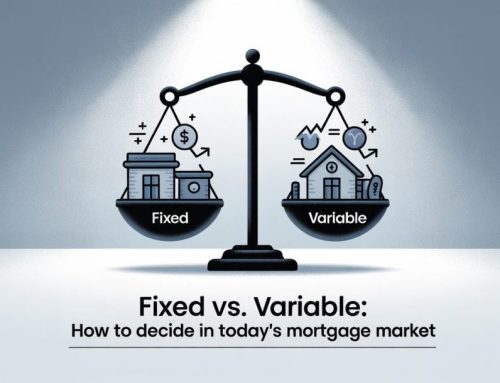The Bank of Canada has increased their overnight rate by 2.25% since March, and they are not finished yet. Their next scheduled rate announcement is on September 7th where they are expected to increase by another 0.50% to 0.75%. This would mean that prime will increase to 5.20% to 5.45%, which will be the highest since 2008.
It’s understandable that everyone has had enough of this.
Fortunately, there is some good news.
The big six banks all believe that these will be the last of the rate increases from the Bank of Canada.
National Bank and CIBC are forecasting an increase of 0.75% on September 7th, with no further increases for the foreseeable future.
RBC and TD are forecasting a 0.50% increase in September followed by another 0.25% increase by the end of the year.
Scotiabank and BMO are the most pessimistic of the big banks, both anticipating a 0.75% increase in September, followed by another 0.25% before the end of the year for a total of 1.00%.
No Further Rate Increases Expected
Not one of the big six banks are expecting anymore increases through to the end of 2023. In fact, RBC and National Bank are both forecasting a 0.25% cut in the fourth quarter next year. We’ll see if more economists jump on this bandwagon. I would not be surprised if they did.
Inflation is then expected to be under control by 2024, at which time we should be feeling the full effects of a recession. The Bank of Canada’s attention will be on stimulating the economy, which means that more rate cuts can be expected.
What Can We Expect From Fixed Mortgage Rates?
While the prime rate will likely increase by another 0.75% to 1.00% by the end of this year, this doesn’t mean that fixed mortgage rates will do the same. They are different animals, and there are times when they can even move in opposite directions.
Despite the 1.00% rate hike from the Bank of Canada on July 13th, downward pressure on fixed mortgage rates continued. This resulted in some lenders slashing their 5 year fixed rates by as much as 0.50%, the first cuts to fixed rates we saw all year.
That’s the last of the good news about fixed rates, however.
Fixed mortgage rates are largely priced based on bond yields, which have been trending upward since the beginning of August. This has unfortunately relieved the downward pressure.
If the current upward trend continues, then it’s possible that we could see mortgage lenders reverse their recent cuts to fixed rates, or even move them up higher than where they were before the drops. If the yields move up above their June 14th peak, which was the highest they have been since 2008, then it’s possible that we could see fixed mortgage rates increase further across the board.
Time will tell.
The Impact Of The Rate Increase On The Stress Test Rate
It won’t just be the prime rate that will increase on September 7th, but the minimum qualifying rate as well (AKA the mortgage stress test). This means everyone can expect to qualify for a smaller mortgage than they would have before the increase.
This is why existing preapprovals or prequalifications may no longer be valid after September 7th
If you have a fixed rate locked in, then you don’t need to be concerned about the change providing that your new purchase closes within the rate hold period. If your purchase closes after this date, then you’ll be subject to the qualifying rate at that time, which could reduce how much you are qualified for.
I explain qualifying rates in detail in my blog on Will You Qualify For A Larger Mortgage With A Fixed Or Variable Rate?
Conclusion
Yes, rates are increasing further, but the end is finally in sight. Rising rates will also mean a rising qualifying rate, which means that it will be even harder to purchase the home that you really want.
If you are shopping for a new home, or if you have a mortgage coming up for renewal, then I would recommend reaching out to us in advance so we can ensure that you’ll still qualify for the mortgage you need.








Leave A Comment